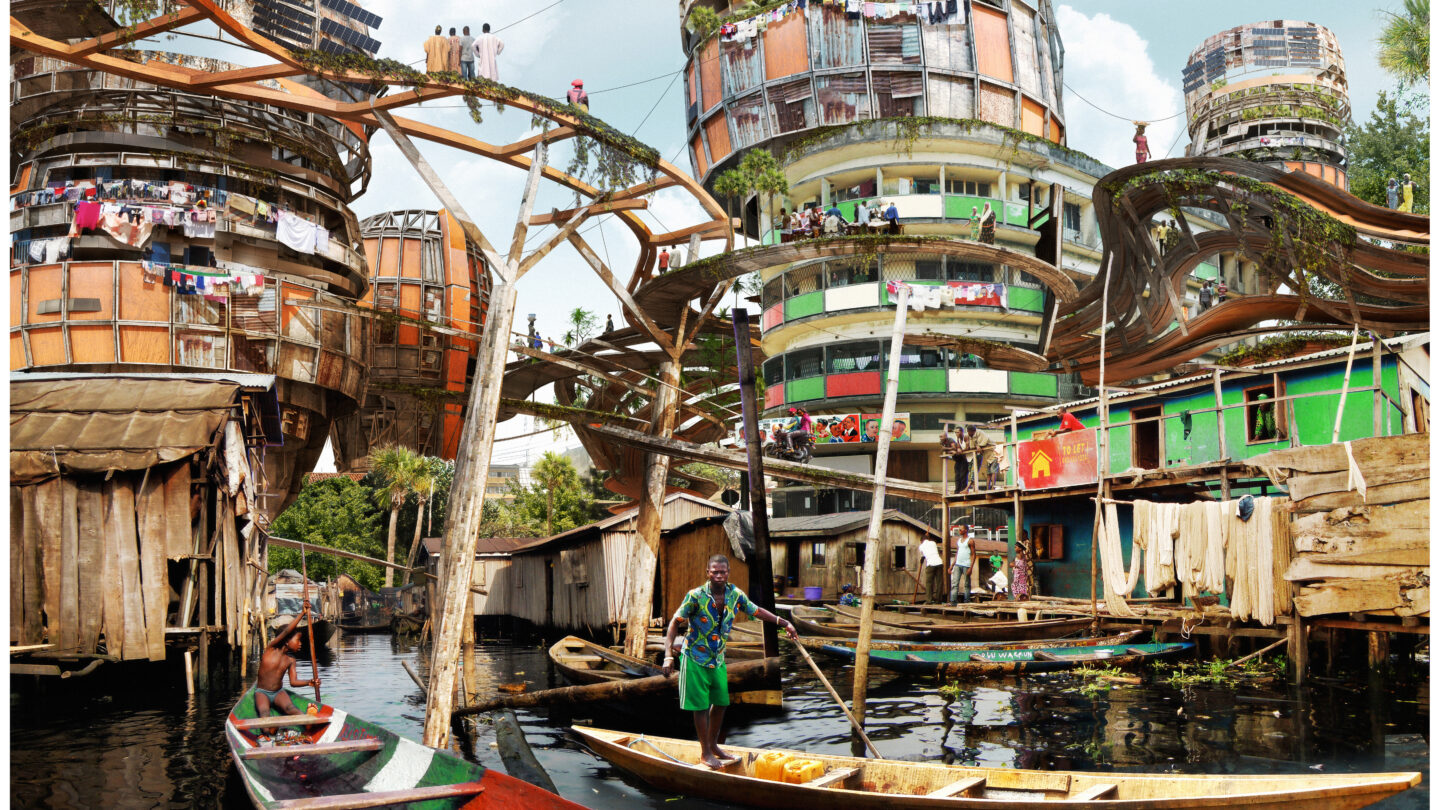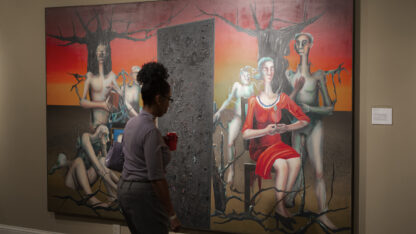Although the cultural phenomenon of hip-hop is associated with music, hip-hop is an entire culture defined by four basic elements: DJing, MCing, B-boying and graffiti art. Now, another element has been added — hip-hop architecture. The exhibition “Close to the Edge: The Birth of Hip-Hop Architecture” explores that new element, and the show is on view through January at MODA, the Museum of Design Atlanta. The exhibition’s curator and director of the Master of Urban Design Program at UNC Charlotte, Sekou Cooke, joined “City Lights” host Lois Reitzes to elaborate on how hip-hop influences the design of built environments.
Interview highlights:
The challenge of defining hip-hop architecture and hip-hop itself:
“Hip-hop was a phenomenon that existed for about 10 years before it was even defined,” said Cooke. “Between the early ’70s and the early ’80s, hip-hop had a really amazing underground life before anyone knew what it was, and then when it really became recorded and on the scene, then it had already changed and become something different. So I imagine a similar life for hip-hop architecture, where it resists definition for a while and then people start to understand, ‘Oh, this is how hip-hop culture actually shapes the environment.'”
“Most of what I like to talk about with hip-hop architecture is, can we find the identity of people who are influenced by hip-hop culture? And can we bring that to the built environment? And can we shape our cities, our buildings, our streetscapes, using the same attitudes that hip-hop has had for the last 50 years in reshaping the musical industry, the dance industry, the DJing performance industry? Some of that is temporal, some of that is time-based, and I think architecture can definitely incorporate things that are temporary, and that are permanent, or things that operate on multiple time scales.”
Real-life examples of hip-hop cultural influence in architecture:
“Here in Charlotte, where I’m at, there’s this great space called Camp North End, and Camp is an area of the city that was a bunch of warehouses, a big industrial space, and over the last few years it’s been developed into an art space, a performance space, a retail space, office spaces, and it’s lively and varied and transitional,” Cooke said. “Anybody who’s been to Camp North End has experienced a few things that are familiar … but a few things that are unfamiliar — occupying an old warehouse space in a way that they didn’t expect to before, or walking across train lines that used to be used for shipping goods and are now part of a public walkway promenade. This has a lot to do with giving over a lot of that space to artists.”
“I’m working with an organization that’s a performing arts organization here in Charlotte to look at a new performing arts center along a very influential corridor for Black culture … and seeing how it’s not just a singular building, but something that can integrate itself into the fabric of the city and actually transform that whole streetscape. And I’m working with an organization in Syracuse to create a first-of-its-kind hip-hop headquarters, where different organizations that forefront hip-hop culture as a way of dealing with at-risk youth can have space for performances, for galleries, for recording spaces to incubate different businesses that they come up with.”
The possibilities of hip-hop culture as a historical marker:
“I was in Cairo just a couple weeks ago, and Cairo is a city that has been shaped and reshaped over millennia, literally, and has had so many different areas of the city, and you can tell what the dominant cultural influence of each era was. Was it the Arabesque influence, or was it the Romanesque influence, or was it the French influence of different areas of the city, or the modernist city, or the postmodernist part of the city? The success of hip-hop architecture will be if a hundred years from now we can look back at our cities and say, ‘This is the area that represents the era of time when hip-hop was the dominant cultural force.'”
“Close to the Edge: The Birth of Hip-Hop Architecture” is on view at MODA through the end of January 2023. Tickets and more information are available at https://www.museumofdesign.org/hip-hop-architecture









